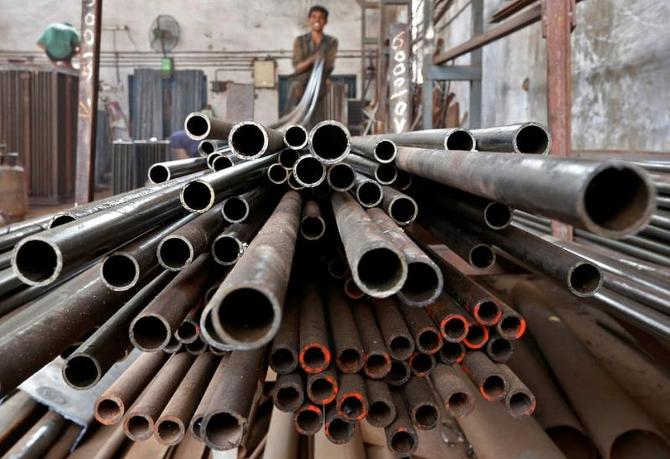Metal stocks: Buying opportunity or a deeper fall?
While most global metal majors are up in the 2023 calendar year, every metal producer in India is down.
Devangshu Datta reports.
Given wild swings, investors are wondering where the metal market is going.
There was a strong uptrend in industrial metal through much of the last three years due to fears of supply chain issues — first due to Covid-19 and then due to the Ukraine War.
That uptrend broke down as it became apparent that global growth would moderate as inflation rose and Western Europe (the EU plus the UK) went into a near-recession and China was in a rolling lockdown.
Industrial metals saw a brief bounce back in early 2023 as China reopened, and there were hopes that global growth would accelerate.
Now that trend may have reversed again due to fears that the turmoil in the banking sector will impact growth and China reopening is not going to be enough to compensate.
Metal stocks crashed in India on Monday as the banking crisis continued to play out.
Is this a kneejerk reaction and, therefore, a buying opportunity for traders and investors with a focus on metals?
If the banking crisis is contained, things could change.
On the other hand, if the turmoil continues, we could see persistently weak demand and the downtrend could get much worse.
It is notable that supply issues remain.
China has reopened, but its domestic demand is still below par.
However, the country is also trying to cut its carbon footprint, which means lower global supply since all metal production is highly carbon intensive and China is the metal powerhouse.
This means that the nation may remain a net metal importer.
Europe, on the other hand, has cut metal production — particularly aluminium — due to the very high energy intensity of the processes and due to high crude and gas prices.
However, as energy prices moderate, Europe could push up production.
These confusing trends make it very hard to judge where the metal market is going.
Purely in terms of metals prices, steel (most categories), aluminium and copper prices are above the levels they were six months ago despite the sharp recent corrections.
The Chinese are net importers at the moment and likely to remain that it they stay committed to de-carbonisation.
Europe may see recovery but weak demand and weak local supply will balance off.
If the banking crisis is contained after the SVB bailout and the Credit Suisse buyout, the metal trend could recover.
One trading possibility: Jefferies recently pointed out that Indian metal producers have severely underperformed their global peers for a while and could therefore look attractive if the China recovery comes into play.
While most global metal majors are up in the 2023 calendar year, every metal producer in India is down.
So is Coal India — which is essentially seen as a metal play.
The NSE Metal Index includes Adani Enterprises which introduces the Hindenburg factor.
However, ignoring that, the worst metal index performers in the last month include Hindalco (down 11 per cent), Vedanta (down 10.5 per cent), Hindustan Copper ( down 8.6 per cent), JSW Steel ( down 8 per cent) and Tata Steel (down 5.25 per cent).
The 15-stock index is down 5.5 per cent in the last month.
If you believe the China narrative and you are optimistic about containment of the banking problem, the downtrend represents a buying opportunity.
This is a contrarian trade but if copper, steel rebar, aluminium prices hold up for the next few sessions on commodity exchanges, it could produce a big payoff.
Source: Read Full Article



